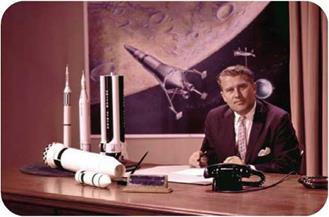. Liquid Fuel and Other Propellants
Controlled spaceflight needs a rocket in which the power can be varied and turned on and off. Liquid-fuel rockets can be controlled in this way. Liquid-fuel rockets are more complicated than solid rockets, because piping, valves, and pumping systems are needed to move the liquid propellants from their storage tanks to the engines. A type of kerosene called RP-1 (Refined Petroleum-1) is a commonly used liquid rocket fuel.
Unlike RP-1, some liquid propellants have to be kept very cold. Hydrogen and oxygen are common rocket propellants. They are normally gases, but they can be packed into very small tanks by changing them into liquids. Hydrogen becomes liquid below a temperature of -423°F (-253°C). Oxygen becomes liquid
below -298°F (-183°C). Liquid oxygen also is called LOX. Propellants that have to be kept super-cold are known as cryogenic propellants. They are not suitable for most military rockets and missiles because it is difficult to keep them sufficiently cold for long periods, and military equipment always must be kept ready to use. Instead, cryogenic propellants are used for civilian spaceflight, such as the Space Shuttle missions, because they are highly efficient, yielding a lot of power per gallon.
Some small rockets use propellants that ignite as soon as they meet. These are called hypergolic propellants. Rocket engines that use hypergolic propellants can be very simple and reliable, because they do not need complicated ignition systems. Small rockets called thrusters use hypergolic propellants.
Strange materials have been used as rocket propellants. The Mythbusters television program, which aims to prove or disprove myths, built a working rocket fueled by a salami. SpaceShipOne, the first privately funded manned space

 |
plane and winner of the Ansari X-Prize, burns rubber as its fuel. The rubber is solid, and the oxidizer, nitrous oxide, is liquid. A rocket like this, with a mixture of solid and liquid (or gas) propellants, is called a hybrid rocket.










